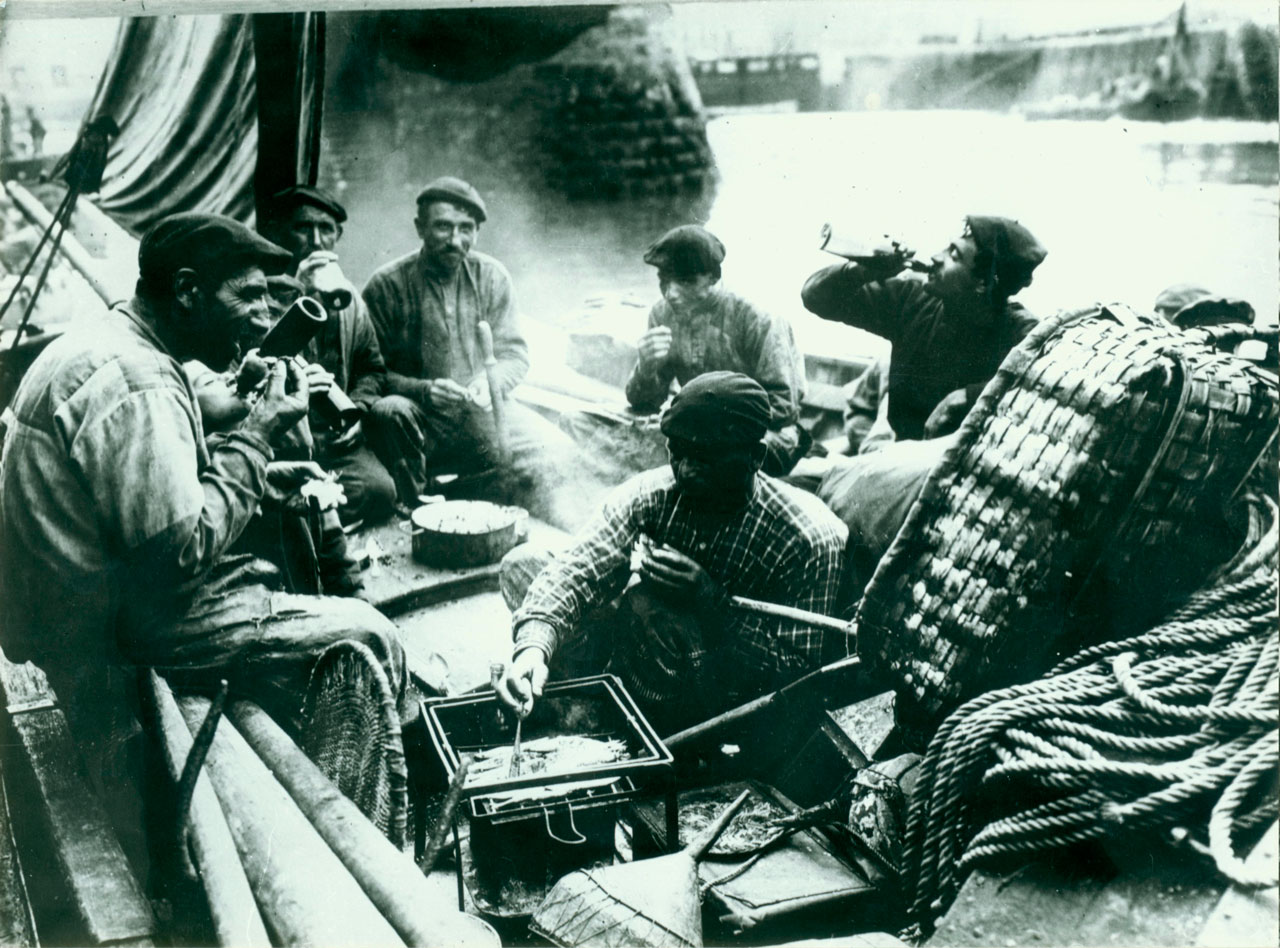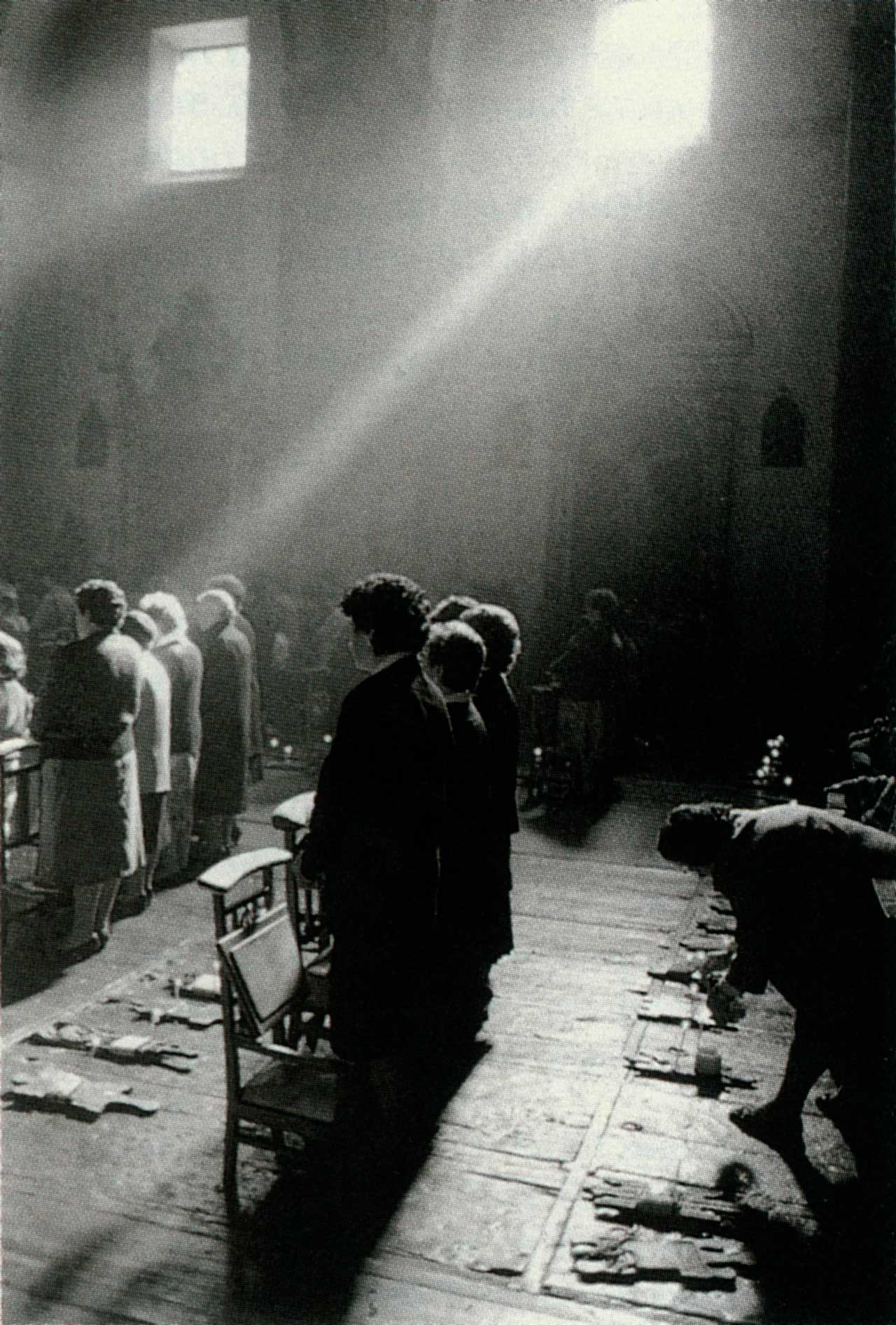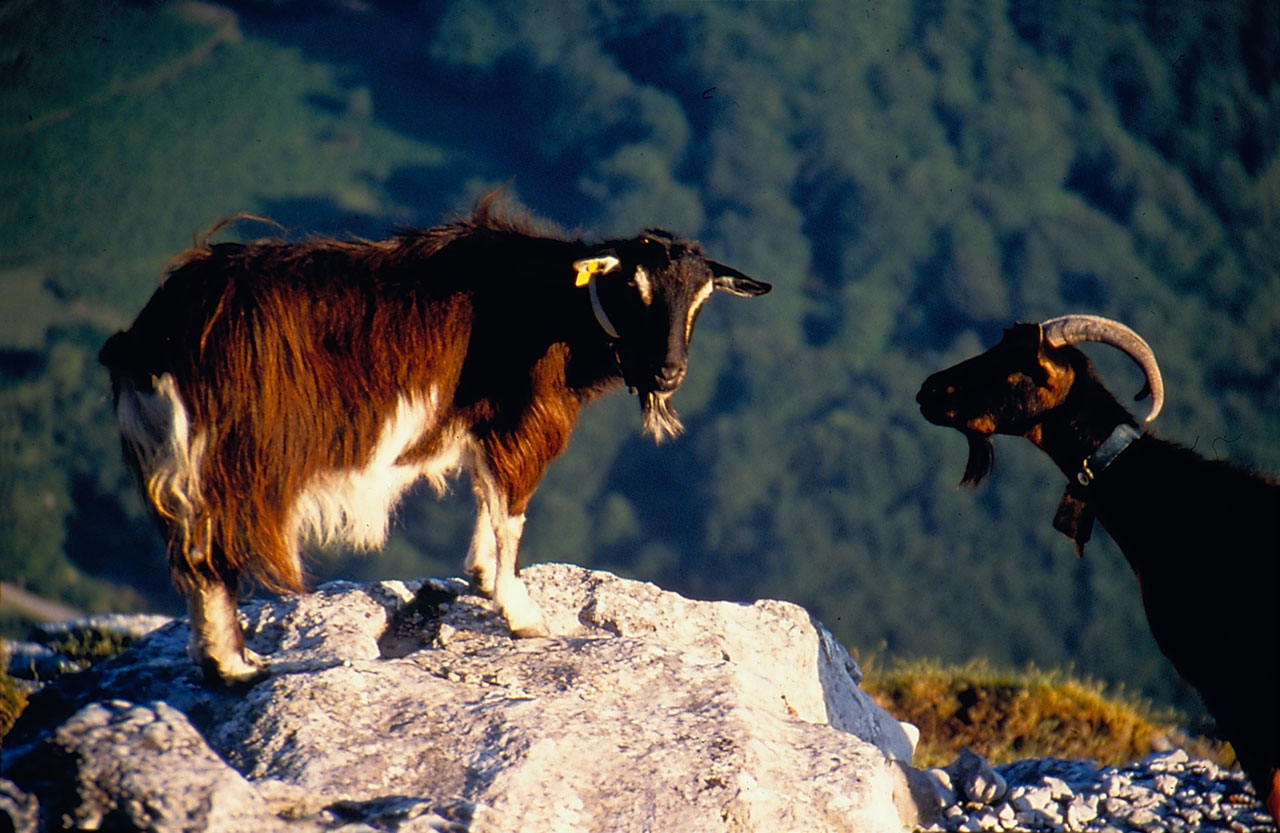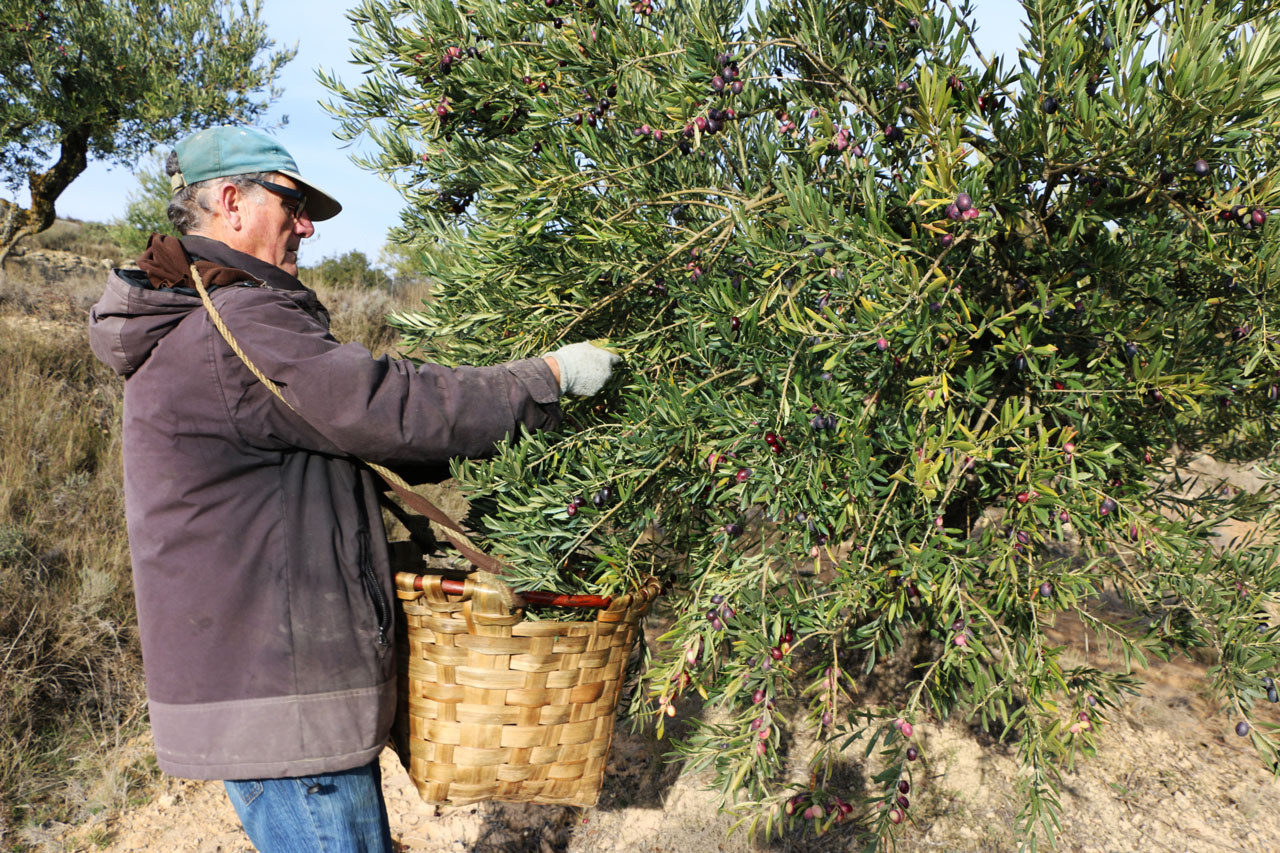Diferencia entre revisiones de «Main Page/en»
De Atlas Etnográfico de Vasconia
| Línea 59: | Línea 59: | ||
====[/atlas/alimentacion/Dando-brillo-al-pan.jpg|Brushing the loaves for a shiny crust. Source: Ander Manterola, Etniker Euskalerria Groups.|Nolako irina, halako ogia.<br /> | ====[/atlas/alimentacion/Dando-brillo-al-pan.jpg|Brushing the loaves for a shiny crust. Source: Ander Manterola, Etniker Euskalerria Groups.|Nolako irina, halako ogia.<br /> | ||
| − | ''Bad flour makes poor dough.''|| | + | ''Bad flour makes poor dough.''||]==== |
| − | ====[/atlas/alimentacion/Mercado-de-Navidad-Vitoria-Gasteiz-1977.jpg|Christmas market. Vitoria-Gasteiz, 1977. Source: Fernando Díaz de Corcuera, Etniker Euskalerria Groups.|Aza-olioak pil-pil, <br />bisigua zirt-zart, <br />gaztaina erreak pin-pan, <br />ahia goxo-goxo, epel-epel. <br /><br />''Traditional Christmas song''|| | + | ====[/atlas/alimentacion/Mercado-de-Navidad-Vitoria-Gasteiz-1977.jpg|Christmas market. Vitoria-Gasteiz, 1977. Source: Fernando Díaz de Corcuera, Etniker Euskalerria Groups.|Aza-olioak pil-pil, <br />bisigua zirt-zart, <br />gaztaina erreak pin-pan, <br />ahia goxo-goxo, epel-epel. <br /><br />''Traditional Christmas song''||]==== |
====[/atlas/alimentacion/Secado-Ispoure.jpg|Hanging for drying. Izpura (NB). Source: Peio Goïty, Etniker Euskalerria Groups.|Ezkonduko urtea eta txarria hildako astea, onenak. <br /> | ====[/atlas/alimentacion/Secado-Ispoure.jpg|Hanging for drying. Izpura (NB). Source: Peio Goïty, Etniker Euskalerria Groups.|Ezkonduko urtea eta txarria hildako astea, onenak. <br /> | ||
| − | ''The year when you marry and the week that pig is slaughtered are the best.''|| | + | ''The year when you marry and the week that pig is slaughtered are the best.''||]==== |
| − | ====[/atlas/alimentacion/Abriendo-los-cortes-tras-la-fermentacion.jpg|Scoring after fermentation. Source: Ander Manterola, Etniker Euskalerria Groups.|Donde no hay ni pan ni pollos, el horno no está para bollos. <br />''If there’s no bread or chicken, you shouldn’t bake rolls.''|| | + | ====[/atlas/alimentacion/Abriendo-los-cortes-tras-la-fermentacion.jpg|Scoring after fermentation. Source: Ander Manterola, Etniker Euskalerria Groups.|Donde no hay ni pan ni pollos, el horno no está para bollos. <br />''If there’s no bread or chicken, you shouldn’t bake rolls.''||]==== |
| − | ====[/atlas/alimentacion/Merienda-principios-del-siglo-20.jpg|Snack break, beginning of the 20th century. Source: Archive of the Chartered Government of Gipuzkoa: Indalecio Ojanguren Collection.|Goseak dagonarentzat, ogi gogorrik ez. <br />''The famished make a feast out of bread crumbs.''|| | + | ====[/atlas/alimentacion/Merienda-principios-del-siglo-20.jpg|Snack break, beginning of the 20th century. Source: Archive of the Chartered Government of Gipuzkoa: Indalecio Ojanguren Collection.|Goseak dagonarentzat, ogi gogorrik ez. <br />''The famished make a feast out of bread crumbs.''||]==== |
| − | ====[/atlas/alimentacion/Mercado-de-Santo-Tomas-Bilbao-1950.jpg|Ribera Market. Bilbao, beginning of the 20th century. Source: Labayru Fundazioa Photograhic Archive.|Food was grown on the family small holding or bought from local markets, which, in turn, were supplied with food grown locally. A few products, nearly always non-staples, complemented local or household self-supply.|| | + | ====[/atlas/alimentacion/Mercado-de-Santo-Tomas-Bilbao-1950.jpg|Ribera Market. Bilbao, beginning of the 20th century. Source: Labayru Fundazioa Photograhic Archive.|Food was grown on the family small holding or bought from local markets, which, in turn, were supplied with food grown locally. A few products, nearly always non-staples, complemented local or household self-supply.||]==== |
| − | ====[/atlas/alimentacion/Comida-a-bordo.jpg|Meal on board. Source: Aguirre Archive.|Nahiz dala udea, <br />nahiz dala negua, <br />goizeko zortziretan, <br />armozu ordua. <br /><br />''Folk song''|| | + | ====[/atlas/alimentacion/Comida-a-bordo.jpg|Meal on board. Source: Aguirre Archive.|Nahiz dala udea, <br />nahiz dala negua, <br />goizeko zortziretan, <br />armozu ordua. <br /><br />''Folk song''||]==== |
| − | ====[/atlas/alimentacion/Caserio-Olabide-Zerain-1982.jpg|Olabide Farmhouse. Zerain (G), 1982. Source: Karmele Goñi, Etniker Euskalerria Groups.|Sueteko laratzak jakiten dau etxeko barri. <br />''People show their true colours at home.''|| | + | ====[/atlas/alimentacion/Caserio-Olabide-Zerain-1982.jpg|Olabide Farmhouse. Zerain (G), 1982. Source: Karmele Goñi, Etniker Euskalerria Groups.|Sueteko laratzak jakiten dau etxeko barri. <br />''People show their true colours at home.''||]==== |
| − | ====[/atlas/alimentacion/Desgranando-habas.jpg|Broad bean podding. Source: Akaitze Kamiruaga, Etniker Euskalerria Groups.|Beans and broad beans were the most widely grown legumes and were traditionally an important part of the diet.|| | + | ====[/atlas/alimentacion/Desgranando-habas.jpg|Broad bean podding. Source: Akaitze Kamiruaga, Etniker Euskalerria Groups.|Beans and broad beans were the most widely grown legumes and were traditionally an important part of the diet.||]==== |
| − | ====[/atlas/alimentacion/Mercado-de-Santo-Tomas-Bilbao-1950.jpg|Market on St Thomas’ Day. Bilbao, 1950. Source: Sancho el Sabio Foundation.|Gabon, bon-bon; Natibitate, ase eta bete; San Estebantxe, lehen letxe. <br />''Eat heartily on Christmas Eve; until you feel full at Christmas; and back to normal on St Stephen’s Day.''|| | + | ====[/atlas/alimentacion/Mercado-de-Santo-Tomas-Bilbao-1950.jpg|Market on St Thomas’ Day. Bilbao, 1950. Source: Sancho el Sabio Foundation.|Gabon, bon-bon; Natibitate, ase eta bete; San Estebantxe, lehen letxe. <br />''Eat heartily on Christmas Eve; until you feel full at Christmas; and back to normal on St Stephen’s Day.''||]==== |
| − | ====[/atlas/alimentacion/Abrir-el-txotx-Gipuzkoa-1988.jpg|Txotx, cider tasting. Gipuzkoa, 1988. Source: Antxon Aguirre, Etniker Euskalerria Groups.|On dagizula janak eta kalterik ez edanak. <br />''Enjoy what you eat and drink.''|| | + | ====[/atlas/alimentacion/Abrir-el-txotx-Gipuzkoa-1988.jpg|Txotx, cider tasting. Gipuzkoa, 1988. Source: Antxon Aguirre, Etniker Euskalerria Groups.|On dagizula janak eta kalterik ez edanak. <br />''Enjoy what you eat and drink.''||]==== |
| − | ====[/atlas/alimentacion/Ronda-del-rosco-el-dia-de-San-Cristobal-Oquina-1986.jpg|Round of the roll on St Christopher’s Day. Oquina (A), 1986. Source: Gerardo López de Guereñu Iholdi, Etniker Euskalerria Groups. <br />''Bread and wine hold body and soul together.''|| | + | ====[/atlas/alimentacion/Ronda-del-rosco-el-dia-de-San-Cristobal-Oquina-1986.jpg|Round of the roll on St Christopher’s Day. Oquina (A), 1986. Source: Gerardo López de Guereñu Iholdi, Etniker Euskalerria Groups. <br />''Bread and wine hold body and soul together.''||]==== |
Revisión del 15:00 10 feb 2020
Grandmother and grandchildren. Urduliz (B), 2011. Source: Akaitze Kamiruaga, Etniker Euskalerria Groups.
House and Family in the Basque Country


House and Family in the Basque Country
The traditional Basque family is noted for a type of clearly defined feminism, which can be seen from the application of the right of the first-born to inherit regardless of their sex, the common ownership of property brought to the marriage by the spouses, their equal standing in civil law, and the woman’s status as the head of the household in the domestic religious life, the cultural rites of the home, of the church and of the family burial ground.
Family Diet in the Basque Country


Family Diet in the Basque Country
Nahiz dala udea, nahiz dala negua, goizeko zortziretan, armozu ordua. Folk song
Children’s Games in the Basque Country


Children’s Games in the Basque Country
Korruka Al corro de las patatas, naranjas y limones, como comen los señores, alupé, alupé, sentadito me quedé.
Traditional Medicine in the Basque Country


Traditional Medicine in the Basque Country
Nolako gaitza, halako erremedioa. There’s a cure for everything.
Rites from Birth to Marriage in the Basque Country


Rites from Birth to Marriage in the Basque Country
As was the case of all important events, the wedding banquet, eztei-bazkaria, was celebrated at home.
Funeral Rites in the Basque Country


Funeral Rites in the Basque Country
Light offerings would light up the way for the soul of the deceased. And bread would sustain it.
Goats wearing bells. Anboto (B), 1999. Source: Labayru Fundazioa Photograhic Archive: José Ignacio García Muñoz.
Livestock Farming and Shepherding in the Basque Country


Livestock Farming and Shepherding in the Basque Country
Cowbells, in the same way as chimes, have been attributed with the power to protect the livestock from spells. Their use to protect against the evil eye, begizkoa, was very widespread in the past.
Agriculture in the Basque Country


Agriculture in the Basque Country
Uzta garaian lokartzen, miserian iratzartzen. Anyone who sleeps at harvest time wakes up destitute.








